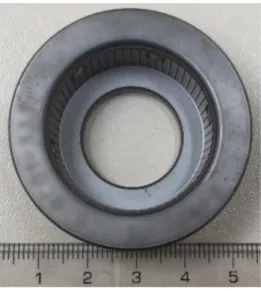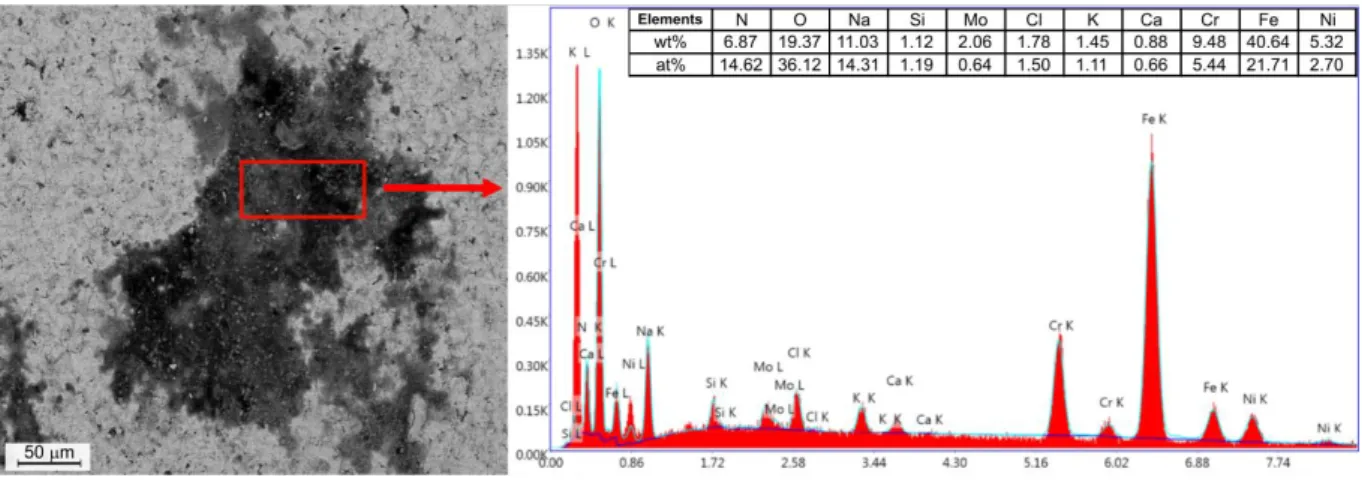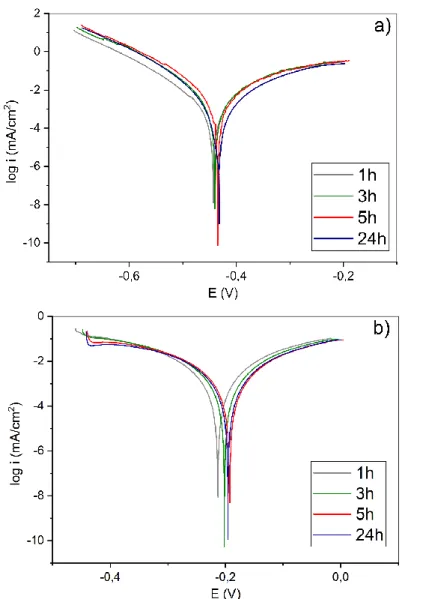Corrosion behaviour of low temperature carburized austenitic stainless steel
Dorina KOVÁCS1, János Endre MARÓTI2, János DOBRÁNSZKY3
1 Department of Materials Science and Engineering, Faculty of Mechanical Engineering, Budapest University of Technology and Economics, Budapest, Hungary, dorina@eik.bme.hu
2 Department of Materials Science and Engineering, Faculty of Mechanical Engineering, Budapest University of Technology and Economics, Budapest, Hungary,
janos.endre.maroti@gmail.com
3 MTA–BME Research Group for Composite Science and Technology, Budapest, Hungary, dobranszky.janos@eik.bme.hu
Abstract: Austenitic stainless steels have low corrosion resistance in applications where strong acids and vapours attack the surface, typically in food and chemical industries. This drawback can be improved by surface treatments. Salt bath, gaseous or plasma-based surface treatments are a diffusion process for improving the hardness of the surface layer on stainless steels without significantly affecting their corrosion resistance. Low temperature carburising process can form crystal lattice distorting diffusion zone or/and compound phases. This research based on an industrial problem where corrosion patches could be formed on the surface after the using. Surface treatments were performed by derouging and passivating to clean the surface. Optical microscope and Vickers microhardness testing were used for the characterization of the surface and potentiodynamic tests were performed to determine the corrosion rate. The patches were formed only on the surface, it cannot affect the cross- section of the layer. The corrosion rates of the original and the derouged samples were similar.
Keywords: kolsterising; derouging; potentiodynamic test; austenitic stainless steel
Introduction
Stainless steel is a widely used material in application where the corrosion resistance is important. The presence of alloying element Cr is forming a stable passive layer on the surface which protects the steel [1]. The main corrosion form of the austenitic stainless steel is pitting [2,3]. The initial step of the pitting is a local breakdown of the passivation oxide layer [4,5]. To avoid this phenomenon and improve the wear resistance, low temperature carburising (below 500°C) could be applied.
Kolsterising is a process that modifies the properties of the base material in a few ten of m layer. It hardens the surface through the diffusion of interstitial carbon without the formation of carbides [6]. This supersaturated austenite layer also called as S-phase [7]. The process -developed by Kolster- which is a proprietary technology of Bodycote Heat Treatment.
Difference values can be found in the publications about the carbon content in the formed layer. Farrell et al. measured 3-4.5 w% [8], Gümpel and Wagner measured 12 at% carbon content by GDOES (glow discharge optical emission spectroscopy) [9], but Faccoli et al.
mentioned the process results 6-7 w% carbon content increasing [10].
Ray and Jacquot said the hardness could increase above to 1000HV that is more than 4 times than the hardness of the base material. Consequently, surface roughness of treated parts remained low during the wear tests while this property of the untreated samples increased [11]. Farrell et al. also mentioned that the corrosion resistance of the kolsterised layer in various acid is greater than the untreated austenite. If inclusions (e.g. MnS) and -ferrite were contained in the layer, these parts reduced the corrosion resistance for those microstructural features and it could be a potential pitting corrosion sites [8]. Buhagiar confirms that S-phase layers which are precipitate-free showed an improved pitting corrosion resistance compared to the untreated material [12].
The aim of this research to investigate the surface corrosion properties of a kolsterised industrial part after the operational.
Materials and methods
AISI 316L type austenitic stainless steel was used for the experiments. The chemical composition of the base material is (in wt.%.): Cr (16.7), Ni (9.84), Mo (1.95), C (0.02), and Fe for balance. The low temperature carburising was performed by the industrial provider of the kolsterising treatment. The original part can be seen in Fig 1.
Figure 1. The original part
For the microstructural investigations Olympus PMG 3 optical microscope was used. The surface hardness was measured by hardness tester (Buehler IndentaMet 1105). The
morphology of the corroded surface of the samples was observed by Olympus SZX16 stereomicroscope and Zeiss EVO MA10 scanning electron microscope (SEM). The corrosion resistance of the samples was evaluated by measuring polarization curves in 1M H3PO4
solution using ZAHNES IM6e electrochemical working station. The cell of the specimen was set-up as the working electrode, a Hg2Cl2/KCltel calomel electrode as the reference electrode and a platinum was used as the counter electrode.
Results and discussion
Characterization of the corroded surface
An operational test was made by the industrial provider who gave the samples for the investigation. Corrosion patches were formed on the surface of some parts which is seen ing Fig 2.
Figure 2. Corrosion patches before the operational
To choose the right solution of the problem these patches were examined by using scanning electron microscope and energy dispersive spectrometry (EDS) analysis (Fig 3). The main elements in the corrosion product are oxygen (O), iron (Fe), the chromium (Cr) and nickel (Ni) content were much lower than that of the base material these are the components of the rust. The significant amount of elements such as Na, Al, K and especially the chlorine, show that the contamination also had to contain some strong corrosive agents.
Figure 3. Analysed points of the corroded part of the sample
These discolorations of the stainless steel and the iron oxide content on the surface is the typical form of the rouge. Rouge formation is a steady chemical process that is underway in all metallic, mostly piping systems in contact with water and all stainless steels corrode over time as minor ingredients are lost and electrochemical potentials rise [13]. The patches could remove by derouging. It is designed to remove the oxides of iron and/or other contaminants
using acidic solutions [14]. Usually, it follows with a passivation treatment to establish the best passive film and provide for an improved corrosion resistant surface.
Microstructure and hardness
The microstructure of the substrate and the modified surface layer are presented in Fig 4. The kolsterised layer was homogeneous along the cross-section which approximately was 30 m.
The base hardness of the substrate was 250 HV0.01 while the layer was 700 HV0.01. It was a significant increase in hardness which can improve the wear resistance of the surface. As it is seen, the rouging did not attack the cross-section of the layer.
Figure 4. Cross-section optical microscopic images of the kolsterised layer Corrosion behaviour
Before the corrosion test, derouging was performed one of the samples. Fig 5. shows the polarization curves after different times. The calculated corrosion rates [15,16] are listed in Table 1.
Table 1. Corrosion rate parameters of the measured samples
original
Ecorr
(V)
icorr
(A/cm2)
corrosion rate (mm/year)
derouged
Ecorr
(V)
icorr
(A/cm2)
corrosion rate (mm/year)
-0.455 -2.36 0.021 -0.21 -2.31 0.021
-0.455 -2.12 0.019 -0.18 -2.43 0.022
-0.438 -1.95 0.018 -0.17 -2.6 0.022
-0.425 -2.04 0.018 -0.19 -2.54 0.023
Based on the calculated corrosion rates, both samples have a good corrosion resistance.
Neither the corrosion potential, nor the current density of the samples considerably changed.
As it is seen, the corrosion rates were slightly increased after the derouging, but the values were similar during the corrosion test. In contrast, the corrosion rate of the original sample was decreased. The last step of the derouging process is a passivation. The original part was not passivated, so during the corrosion test a passive film can be formed which can be caused the decreasing of the corrosion rate. As it is seen in Fig 6., changes cannot be observed on the surface before and after the corrosion test.
Figure 5. Polarization curves of the a) original b) derouged samples
Figure 6. SEM images of the original sample a) before the corrosion b) after the corrosion test and the derouged sample c) before the corrosion d) after the
corrosion test
Conclusion
The kolsterising is an effective surface treatment to improve the hardness of the austenitic stainless steel. The corrosion patches which contains mostly iron-oxide could be removed by derouging. After the process the derouged and the original parts have similar corrosion rate.
The corrosion resistance was not declined due to the kolsterising, but furthermore the effect of the improving have to be investigated.
Acknowledgement
The authors are grateful to the foundation of Richter Gedeon Talentum for supporting this research.
References
[1] M.A.J. Somers, T.L. Christiansen, Low temperature surface hardening of stainless steel, Woodhead Publishing Limited, 2015.
[2] R.T. Loto, Pitting corrosion evaluation of austenitic stainless steel type 304 in acid chloride media, J. Mater. Environ. Sci. 4 (2013) 448–459.
[3] B. Varbai, I. Mészáros, K. Májlinger, Effects of different backing gases on 2404 duplex stainless steel welds, in: IOP Conf. Ser. Mater. Sci. Eng., 2018: p. 426.
[4] A. Pardo, M.C. Merino, A.E. Coy, F. Viejo, R. Arrabal, E. Matykina, Pitting corrosion behaviour of austenitic stainless steels – combining effects of Mn and Mo additions, Corros. Sci. 50 (2008) 1796–1806.
[5] A.A. Aghuy, M. Zakeri, M.H. Moayed, M. Mazinani, Effect of grain size on pitting corrosion of 304L austenitic stainless steel, Corros. Sci. (2015).
[6] S.R. Collins, P.C. Williams, S. V Marx, S. Company, A. Heuer, F. Ernst, H. Kahn, C.
Western, L. Carburization, Low-Temperature Carburization of Austenitic Stainless Steels, ASM Handb. 4D (2014) 451–460.
[7] J. Buhagiar, 25 years of S-phase, Surf. Eng. 26 (2010) 229–232.
[8] K. Farrell, E.D. Specht, J. Pang, L.R. Walker, A. Rar, Characterization of a carburized surface layer on an austenitic stainless steel q, J. Nucl. Mater. 343 (2008) 123–133.
[9] P. Gümpel, M. Wägner, Improving hardness and wear resistance of austenitic stainless steel, MTZ Worldw. 71 (2010) 50–53.
[10] M. Faccoli, G. Cornacchia, R. Roberti, V. Bordiga, Effect of Kolsterising treatment on surface properties of a duplex stainless steel, La Metall. Ital. (2012) 13–18.
[11] O. Rey, P. Jacquot, Kolsterising : hardening of austenitic stainless steel, Surf. Eng. 18 (2002) 412–414.
[12] J. Buhagiar, S-phase for biomedical applications: an interdisciplinary approach, in:
Interdiscip. Eng. Int. Conf., 2012: pp. 10–16.
[13] T. Sandle, The Rouging Effect in Pharmaceutical Water Systems: Causes and Strategies for Prevention, GXP J. (2015).
[14] F. Di Franco, M. Santamaria, G. Massaro, F. Di Quarto, Photoelectrochemical
monitoring of rouging and de-rouging on AISI 316L, Corros. Sci. 116 (2017) 74–87.
[15] D.M. Kemény, D. Károly, Corrosion Testing of Additively Manufactured Metals and Biomedical Devices, Acta Mater. Transilv. 1 (2018) 81–84.
[16] E. McCafferty, Validation of corrosion rates measured by the Tafel extrapolation method, Corros. Sci. 47 (2005) 3202–3215.



